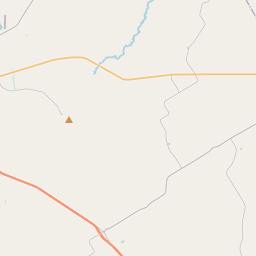Falls of the Brazos River
Historical marker location:






When Anglo-Americans began to settle in Texas, the falls of the Brazos were located 2 miles southwest of here. At that time, the water fell about 10 feet over a rocky ledge. The falls served the Indians and early settlers as a traill landmark, meeting point, and compsite. In 1834 colonizer Sterling C. Robertson (1785-1842) established the town of Sarahville De Viesca at the fall line of the west bank of the Brazos, but it was abandoned in 1836 because of Indian hostilities. Later renamed Ft. Milam, the settlement lasted only a few more years. It was followed by the town of Bucksnort, begun in the 1840s on the east side of the river. The falls also formed a natural fording place for frontier travel; the rocky stream bed was the only hard-bottom crossing of the Brazos within 200 miles of the coast. The rapids marked the limit of the river's 19th century steamboat traffic as well.
Organized in 1850, Falls County was named for this distinctive landmark. Marlin became the county seat in 1851, and Bucksnort soon disappeared. The Brazos River changed course in 1866, moving the Fall line to the present site and lowering the rapids to about 2 feet. Today a county park is located along both sides of the river at the falls
As one of the most visible programs of the Texas Historical Commission (THC), historical markers commemorate diverse topics in Texas history, including: the history and architecture of houses, commercial and public buildings, religious congregations, and military sites; events that changed the course of local and state history; and individuals who have made lasting contributions to the state, community organizations, and businesses.
Texas was once an independent country: After winning its independence from Mexico in 1836, Texas became its own country, known as the Republic of Texas. It existed as an independent nation for nine years before being annexed by the United States in 1845.
In the early 19th century, European settlers began to arrive in Falls County, drawn by the fertile soil and abundant natural resources. The county was officially established in 1850, and the town of Marlin was designated as the county seat. The development of railroads during this period further spurred the growth of the region, allowing for easier transportation of goods and people.
During the Civil War, Falls County, like many other parts of Texas, heavily supported the Confederacy. The economy revolved around agriculture, especially cotton plantations, which relied on enslaved labor. However, the war brought multiple challenges to the county, including shortages of supplies and soldiers, as well as occasional conflicts with Union forces.
In the post-war era, Falls County faced a period of rebuilding and diversification. The reliance on cotton continued, but other industries such as livestock ranching and oil extraction began to play a significant role in the county's economy. Over the years, Falls County has gone through various changes and challenges, but it remains a vibrant community with a rich history tied to the land and its people.
Falls County Timeline
This timeline provides a concise overview of the key events in the history of Falls County, Texas.
- 1837 - Falls County is established by the Republic of Texas
- 1838 - The county seat is established in Perryville
- 1850 - Marlin becomes the new county seat
- 1861-1865 - Falls County residents serve in the Civil War
- 1873 - The Houston and Texas Central Railway reaches Marlin
- 1886 - The town of Lott is incorporated
- 1896 - The Marlin Female Institute is established
- 1910 - A serious cotton boll weevil infestation hits the county
- 1921 - The infamous Klan trials take place in Marlin
- 1953 - Falls County dedicates a new courthouse
- 1975 - Marlin State Hospital is designated a National Historic Landmark
- 1996 - The Marlin Democrat newspaper celebrates its 125th anniversary
- 2018 - Falls County celebrates its 180th anniversary